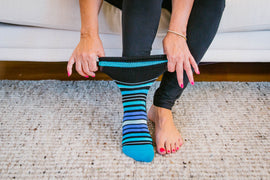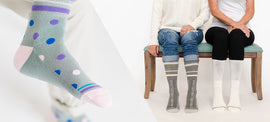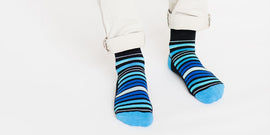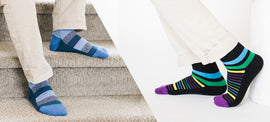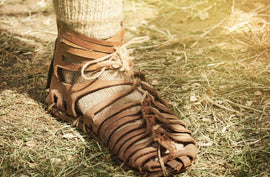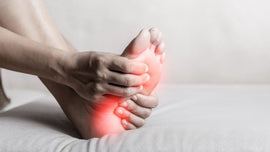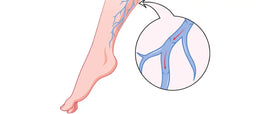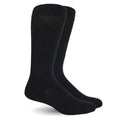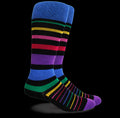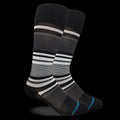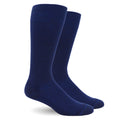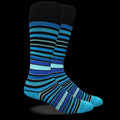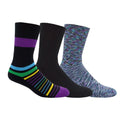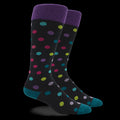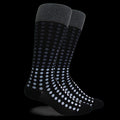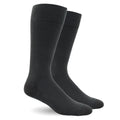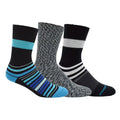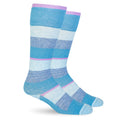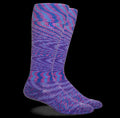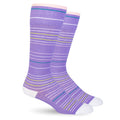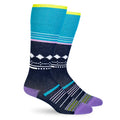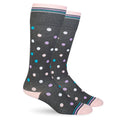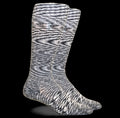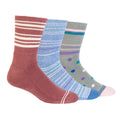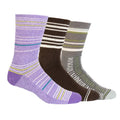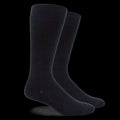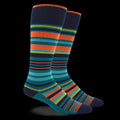How Compression Socks Should Fit
Posted by SIMON LIM

If you are like most people, you probably don't think about your socks until you can't find a matching pair or until you encounter some foot issues that better socks can help with.
However, compression socks are not your average everyday socks. They require a bit more thought when it comes to fit. In this blog post, we will discuss how compression socks should fit so that you can get the perfect amount of compression and comfort.
What Do Compression Socks Offer
Compression socks are designed to offer a graduated level of compression. This means they are tighter at the ankle and gradually get looser as they go up the leg. The level of compression is measured in millimeters of mercury (mmHg).
Depending on your needs, you may require different levels of compression. For example, people with circulatory issues may need a higher level of compression (20-30 mmHg) than someone who is an athlete or has swollen feet from standing all day (15-20 mmHg).
Click here to check out how to measure for compression socks.
Finding the Right Compression Sock Fit

When looking for compression socks, it is essential to find the right fit. If they are too tight or too loose, they may not effectively provide the proper compression.
There are a few things to keep in mind when finding the right fit for your compression socks.
- Right size. If they are too small, they can cause pain and may not provide an adequate compression level. If they are too large, they may not stay in place and may not be as effective.
- Tightness. If the compression socks are too loose, they will not provide the right pressure level.
- Right length. If compression socks are too short, they will not be effective either. If they are too long, they may be uncomfortable and not stay in place.
- Right compression level. If they are too light, wearing compression socks will be useless. They may also cause irritation rather than give you comfort if they are too heavy.
- Fitting. They should be snug but not too tight. You should be able to put your finger between the compression sock and your skin without it being too tight.
When looking for compression socks, it is vital to keep these tips in mind. If you take the time to find the right pair, you will be much more likely to be comfortable and get the level of compression that you need. Finding the right pair of compression socks can make a big difference in your comfort and your ability to stay active.
How to Get the Right Compression Socks Size
Compression socks are a great way to improve circulation, reduce swelling, and relieve pain. But how do you know which size is right for you? Here are a few tips:
- Measure your leg size. There are two main ways to measure knee-high compression socks. The first way is to use a tape measure. To do this, wrap the tape measure around your leg just below the knee and take note of the measurement. Also, record the calf circumference by wrapping the tape measure around the widest part of your calf, and record. The second way to measure knee-high compression socks is by using your shoe size. Take your shoe size and add one inch to it; this will give you your compression sock size.
- Take into account any other medical conditions that might affect sizing, such as diabetes or edema.
- Consider the level of compression you need. Different socks offer different compression levels, so be sure to choose the right one for your needs.
Following these simple steps will help ensure that you get the perfect fit for your compression socks.
Signs Your Compression Socks Are a Bad Fit

If you're having trouble walking or feel pain and swelling in your legs, it may be because your compression socks are a bad fit. Compression socks come in various sizes, so it's essential to make sure you're wearing the correct size.
If you're experiencing any of the following, likely, your compression socks are not providing the right level of support:
- You feel pain or discomfort when wearing them
- They leave marks on your skin
- They slip down or bunch up
- They're difficult to put on or take off
If you're experiencing any of these issues, it's important to consult with your doctor or compression sock specialist to find a better-fitting pair of compression socks. Wearing the right size and type of compression sock can make a big difference in your overall comfort and health.
Key Takeaways
Compression socks for women and men are an important part of many people's lives. They help to improve circulation and can prevent various medical conditions. However, finding the right fit for compression socks can be a challenge and you need to first understand how compression socks should fit.
When you first put on a pair of compression socks, they will feel tighter than regular socks. This is normal and to be expected. However, if the socks are too tight or uncomfortable, they are likely not the right size.
The socks should feel snug but not constricting. You should be able to move your toes and ankles freely without feeling like the sock is cutting off circulation.
There should be no wrinkles in the fabric. The compression socks should also not slide down your leg. You should be able to walk and move around easily in your compression socks.
Compression socks are an important part of many people's lives, so don't hesitate to get the help you need to find the perfect fit!
SHARE:




